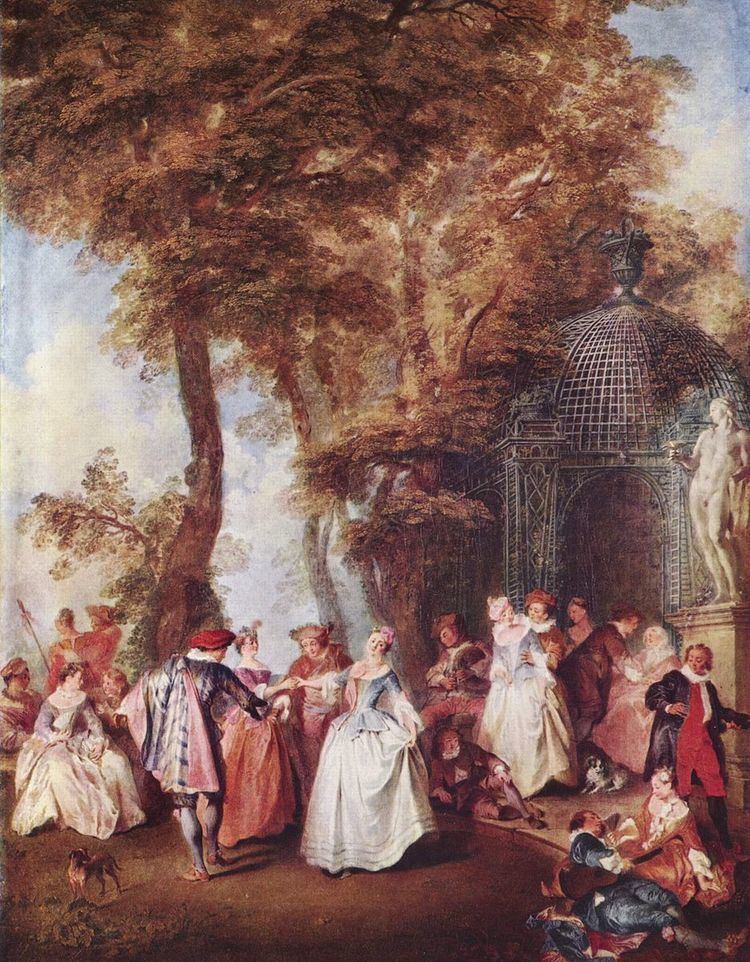 | ||
A Fête champêtre was a popular form of entertainment in the 18th century, taking the form of a garden party. This form of entertainment was particularly popular at the French court where at Versailles areas of the park were landscaped with follies, pavilions and temples to accommodate such festivities.
While the term is derived from the French expression for a "pastoral festival" or "country feast" and in theory was a simple form of entertainment, in practice (especially in the 18th century), a fête champêtre was often a very elegant form of entertainment involving on occasions whole orchestras hidden in trees, with guests sometimes in fancy dress. Thus the simplicity of the event was often contrived. A fête champêtre is very similar to a Fête galante although this term is generally more confined to the idealistic fête champêtre as depicted in art.
A famous painting, the Pastoral Concert (as the Louvre now call it) dated to ca. 1509 and variously attributed to Giorgione, Titian, and Sebastiano del Piombo, was named Fête champêtre when it first became part of the Louvre collection. The title is somewhat misleading, as the painting most likely represents some mythological subject, whose precise identification has posed difficulties for art historians.
